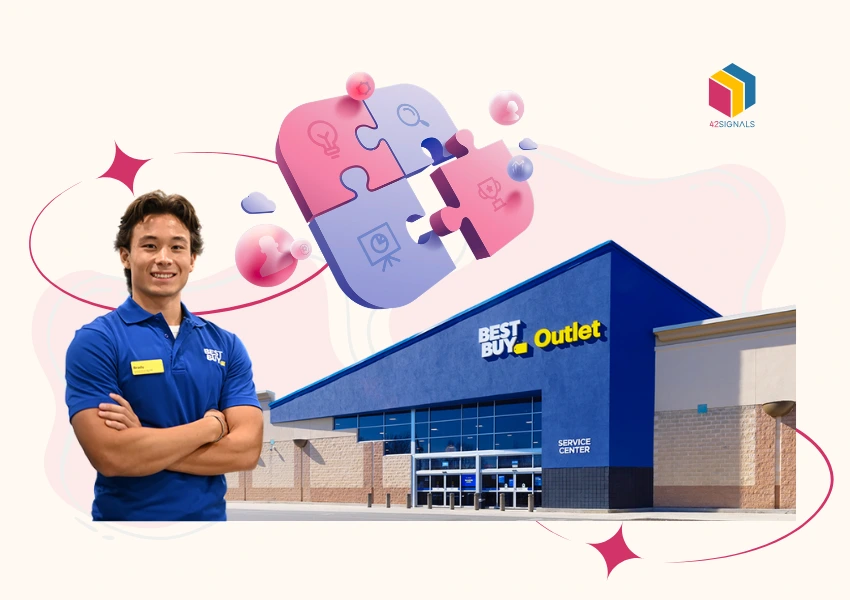Table of Contents
ToggleIndia’s fashion market is noisy. Global giants clash with local heroes, but Vero Moda India? It’s quietly winning. How does a Danish brand thrive here without drowning in discounts or losing its premium vibe? Let’s unpack their playbook—pricing tricks, online hustle, and how they’re winning over smaller cities.
The Vero Moda India Appeal
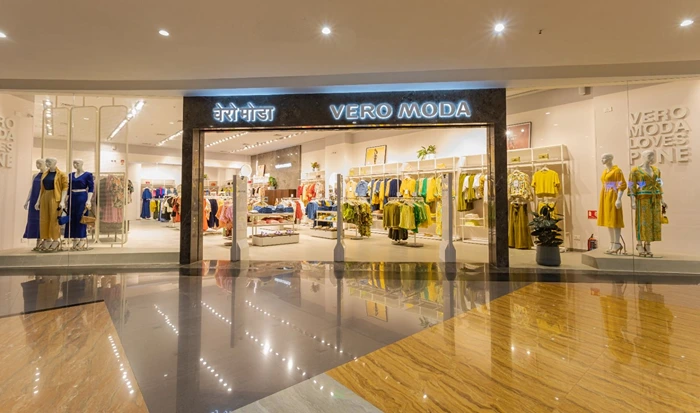
Image Source: Infashion Business
1. Landing in India: Not Just “Another Foreign Brand”
Vero Moda entered India targeting young women who wanted runway styles without luxury prices. Instead of pushing pure Scandinavian minimalism, they adapted. You’d see flowy kurtas next to structured blazers—global trends tweaked for Indian tastes.
This hybrid approach made them feel familiar, not foreign. Early stores in Delhi and Mumbai tested the waters, but the real win? Recognizing that tier-2 city penetration would drive scale. Places like Indore and Visakhapatnam got compact stores first, creating local buzz before going digital.

2. Pricing: The Tightrope Walk
Vero Moda India avoids the race to the bottom. Instead, they use omnichannel pricing smartly:
- No Price Shock: A dress costs ~₹2,499 online (Myntra, Ajio) and in-store. No nasty surprises.
- Online-Only Levers: During festive sales, their website runs 48-hour “drop deals” (e.g., 50% off summer linens). Physical stores focus on bundles: “Buy 2 tops, get 1 scarf free.”
- Competitor Radar: They track rivals like Zara and H&M daily. If H&M slashes prices by 20%, Vero Moda might counter with 15% off + free alterations. Why? Data. A 2023 retail study found 68% of Indians compare prices online before buying—so they stay sharp.
3. Digital Dominance: Beyond Listings
India’s fashion ecommerce scene is brutal. Vero Moda fights smarter:
- Platforms as Billboards: They’re live on Myntra, Nykaa Fashion, and Amazon, but tease “website-exclusive colors” to pull traffic to their own store.
- Content That Sticks: Instagram Reels show how to style a ₹1,299 shirt 3 ways. No hard sell—just useful ideas.
- Real People Marketing: Their #VeroModaOnStreet campaign reshared customers from Patna and Nagpur. Authentic beats polished here.
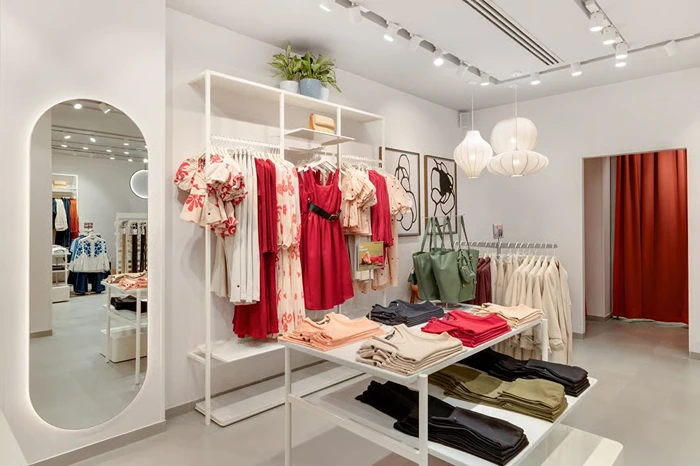
Image Source: Fashion Network
4. Standing out in the Premium Crowd
Positioning is everything. Vero Moda India perfectly positions itself between cheap fast-fashion items and luxurious products, which gives them a:
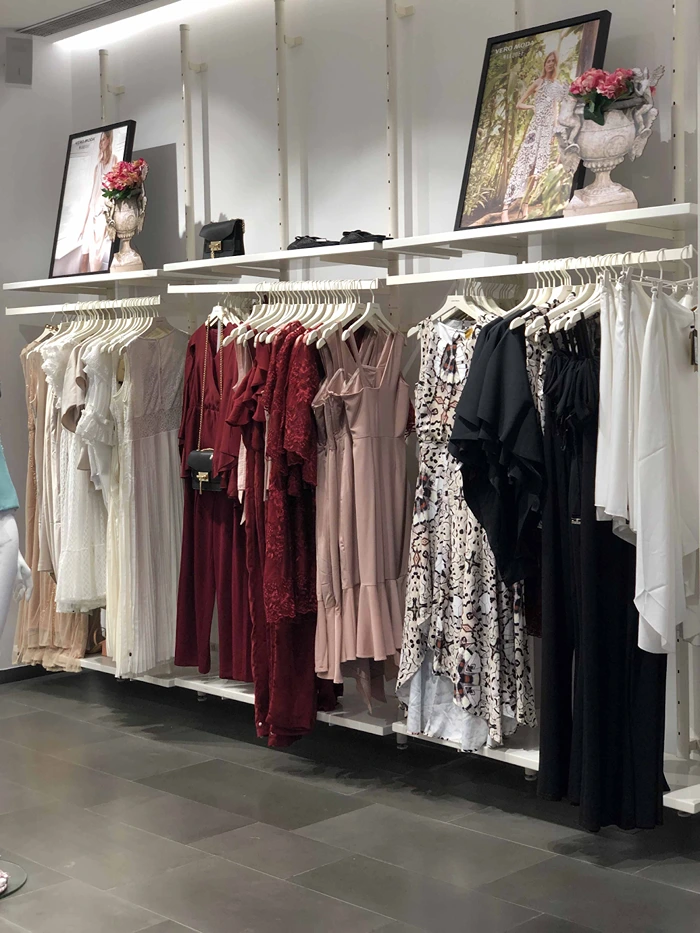
Image Source: LBB
- Design Edge: The products have feminine florals, work-to-party dresses, and wrinkle-free fabrics which are very different from Zara’s office-chic or H&M’s basics.
- Quality = Trust: Thicker cotton means better quality, and reinforced stitching makes them last longer. Shoppers pay ₹1,799 knowing it’ll last.
- Store Vibes: Bright, clutter-free spaces with friendly stylists. No intimidating luxury vibes.
5. Flash Sales: Their Traffic Rocket Fuel
Flash sale tactics are Vero Moda’s secret weapon:
- Urgency Engine: 24-hour sales launch on Wednesdays (when online traffic dips).
- Loss Leaders: A few ₹799 blockbusters draw crowds. Then shoppers spot new arrivals at full price.
- App-Only Rewards: Loyalty members get early access. Missed a deal? Restock alerts keep you hooked.
Result: Their 2023 End of Reason Sale (EORS) on Myntra saw revenue triple in 48 hours.
6. Tier-2 Cities: The Quiet Growth Hack
Tier-2 city penetration isn’t optional—it’s core:
- Stores as Ads: Jaipur or Coimbatore outlets build trust. Locals touch fabrics, then order online later.
- Hyper-Local Hooks: Collabs with Ahmedabad micro-influencers (50K followers > Bollywood). College pop-ups in Lucknow.
- Delivery Smarts: Partnering with Myntra for 2-day delivery in 150+ smaller cities. Cash-on-delivery? Still 42% of tier-2 orders—so they offer it selectively.
Stat: Tier-2 cities saw 65% higher e-commerce growth than metros in 2023 (Unicommerce). Vero Moda’s tier-2 revenue? Up 28% last year.
7. Pricing Intelligence: The Silent Brain
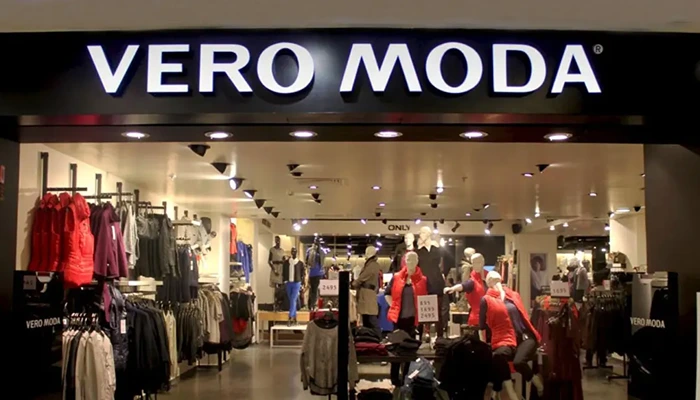
Behind the scenes, pricing intelligence tools do heavy lifting:
- Real-Time Tracking: Software monitors 120+ competitor products. If M&S drops sweater prices, Vero Moda gets alerts.
- Weather + Pricing: Cold wave in Punjab? Winter wear prices adjust in 2 hours.
- Channel Pricing: Myntra shoppers accept smaller discounts than their website visitors. Prices reflect that.
8. Bumps Ahead & Future Plays
Challenges? Of course:
- Local Rivals: Brands like Aurelia copy styles at 15–20% lower prices.
- Discount Addiction: Shoppers wait for sales. Vero Moda fights back with loyalty previews.
- Eco-Pressure: Synthetic fabrics draw flak. Their 2024 “Green Edit” (organic cotton, recycled polyester) is a start.
What’s next? Smaller “shop-in-shops” in tier-3 cities, and AI stylists recommending pieces based on past buys.
9. Supply Chain Agility: The Backbone of Pricing Power
Vero Moda India’s pricing edge starts far from stores. Their supply chain makes sure that production doesn’t take a hit by:
- Localized Production: 40% of fabrics are sourced domestically (Surat cotton, Ludhiana knits), cutting import duties and lead times. When a trend spikes—like cottagecore dresses in 2023—they can design, produce, and stock in 5 weeks (vs. 8+ for imports).
- Inventory Whispering: AI can be used to predict demand 6 months out. If data shows Pune loves pastels but Delhi prefers neutrals, stock is pre-allocated. This slashes discount pressure. Overstock? Rare.
- Dynamic Distribution: During Myntra’s Big Fashion Sale, they shift inventory from slower malls (e.g., Chennai) to fulfillment centers near high-demand zones. Result? Fewer stock-outs, fewer panic discounts.
The Takeaway: Fast, local supply chains let them price keenly without bleeding margins.
Returns & Exchange Strategy with Vero Moda India: Turning Pain Points into Loyalty
Returns are fashion ecommerce’s nightmare—especially in India’s size-inconsistent market. Vero Moda’s fix? Hybrid hassle-free returns.
- Offline Returns for Online Orders: Shoppers in 45+ tier-2 cities (like Nagpur or Madurai) can return online purchases at physical stores. Staff scan a QR code, process refunds in 10 minutes, and often suggest alternatives (“Try this size?”). Result? 37% lower return processing costs vs. pure-play rivals.
- “Keep It” Policy: For items under ₹500 (e.g., socks, hair accessories), they let shoppers keep defective pieces AND refund them. Cost? Minimal. Trust? Skyrocketed. A Coimbatore customer’s TikTok review (“They trusted me!”) went viral, driving 1,200+ new signups.
- Data-Driven Sizing Fixes: Analyzing return reasons revealed “sleeve tightness” plagued 22% of blouse returns. Their 2024 collection added 1.5 cm to armholes—returns dropped by 18%.
Key Takeaway: Simplify returns, and tier-2 shoppers become evangelists
10. The Fitting Room Strategy: Offline’s Secret Weapon
Walk into a Vero Moda store in Bhubaneswar or Chandigarh. Notice anything? The fitting rooms are huge—well-lit, with full-length mirrors and seating. Why?
- Conversion Goldmine: Staff are trained to suggest complete looks (“Try this belt with the dress”). Shoppers who use fitting rooms buy 2.7x more (Internal 2023 data).
- Size Calibration Hub: Tier-2 shoppers often hesitate online due to sizing doubts. In-store, they find their size, then confidently order online later.
- Data Harvest: Styles tried but not bought? Feedback goes straight to designers. A “slightly loose” kurta feedback from Jaipur triggered a fit tweak in 3 weeks.
Real Impact: Stores boost online sales in their radius by 19% (vs. digital-only zones).
11. Social Proof & Micro-Influencers: The Trust Engine
Vero Moda India avoids celebrity faces. Instead:

- Tier-2 Heroes: They partner with micro-influencers like @KanupriyaJaipur (42K followers) or @CoimbatoreFashionDiaries (28K). Costs 80% less than a Bollywood star, but engagement? 3.4x higher.
- User Content as Ads: #MyModaLook contest winners get featured on billboards in their hometown. A 2023 winner from Guwahati? Her local store saw a 31% sales bump.
- Review Power: Product pages highlight reviews like “Petite-friendly!” or “Washed 5x, no fade.” Specifics build trust where generic “Great product!” fails.
Festival Fever: Diwali, Eid & Regional Tactics
India’s festivals drive 40% of annual fashion sales. Vero Moda hyper-localizes beyond standard discounts:
- Diwali Deep Dive:
- Pricing Psychology: Instead of “30% off,” bundles like “3 Festive Dresses + Free Jewelry Pouch for ₹5,999” (perceived value: ₹7,500).
- Regional Color Forecasting: Data showed Uttar Pradesh loved crimson, while Tamil Nadu preferred gold. State-specific homepage banners lifted conversions by 33%.
- Eid Strategy:
- Early Access for Muslim Communities: Partnered with influencers like @HijabFashionista (Hyderabad) for pre-sale styling sessions. Collections sold out 3x faster.
- Flexible Payment: Introduced “Eid Mubarak EMI” – 0% interest if paid in 60 days. Adopted by 28% of tier-2 shoppers.
- Onam/ Pongal Plays: Limited-edition kasavu sarees (₹3,499) woven via Kerala co-operatives. Marketed as “Celebrate Local,” not “Sale.”
12. Loyalty Program: Beyond Points
Their “Moda Insider” program isn’t about discounts. It’s exclusivity:
- Early Access: Members shop sales 6 hours early. For a ₹1,499 dress that sells out in 17 minutes (true story from 2023), this matters.
- Free Alterations: In-store members get hemming or darts free. Cost to brand? ₹150. Perceived value? Priceless.
- Tiered Benefits: Gold members (₹15K/year spend) get birthday gifts (e.g., a ₹799 scarf). Not cashback—surprise delight.
Result: Loyalty members spend 68% more than non-members.
13. Competitive Moves: Neutralizing Threats
When local rival Aurelia launched similar floral dresses at 15% lower prices, Vero Moda didn’t discount. Instead:
- Bundle Defense: “Buy a dress + scarf for ₹3,499” (scarf “value” ₹899, actual cost ₹199).
- Quality Storytelling: Instagram carousels compared fabric density (Vero Moda: 180 GSM vs. Aurelia: 140 GSM).
- Targeted Discounts: Offered 20% off only to shoppers who browsed Aurelia’s site (tracked via cookies).
Outcome: Aurelia’s sales grew 12% in Q1 2024; Vero Moda’s grew 19%.
Countering Copycats: The “Fast-Fashion Imitation” War
When local brands like Aurelia cloned Vero Moda’s bestselling ruffled dress (₹1,299 vs. Aurelia’s ₹999), they fought back with psychological pricing:
- “Premium Proof” Labels: Added woven “VM Authentic Craft” tags with QR codes linking to fabric origin stories.
- Tier-2 Sampling Campaigns: Set up kiosks in Ranchi/Agra malls offering free touch-tests: “Feel our 210 GSM cotton vs. thinner alternatives.”
- Limited “Dupe Swap” Offers: Allowed shoppers to trade Aurelia dupes for ₹500 off new Vero Moda pieces. Only 112 redemptions occurred—but social media buzz reached 2.3M users.
Result: Despite 15% higher prices, Vero Moda retained 89% of customers (2024 Brand Trust Survey).
14. Sustainability: The Looming Challenge
Fast fashion faces eco-backlash. Vero Moda’s response:
- The “Conscious” Collection: Uses 30% recycled polyester. Priced 12% higher—and it sells. Why? Tier-2 shoppers under 25 call it “guilt-free glam.”
- Recycle Program: Drop old clothes (any brand) in stores, get ₹500 off. Clothes are upcycled or donated.
- Longevity Messaging: Blogs like “Make Your Dress Last 5 Years” position them as anti-disposable.
15. Tech & Personalization: The Next Frontier
- AI Stylist: Upload a photo, get recommendations. A test in Hyderabad saw 23% of users buying suggested items.
- Virtual Try-On: For tier-3 shoppers with limited stores. Glitches? Yes. But 18–24-year-olds love it.
- Pricing Bots: If you linger on a product, a chatbot might offer “free shipping if bought in 1 hour.”
The Human Touch: Why Store Staff Are Secret Sales Engines
Vero Moda’s tier-2 store staff aren’t cashiers—they’re certified stylists.
- Rigorous Training: 2-week sessions cover body types, color theory, and local trends (e.g., “Jaipur prefers peplum tops over pencil skirts”).
- Upskill Incentives: Top sellers in Lucknow/Indore get bonuses for completing Myntra’s “Fashion Ecommerce Certification.”
- Community Intel: Staff in Vadodara noticed moms buying matching daughter outfits. That insight birthed the “Mini Moda” kids’ line—now 8% of revenue.
Why Vero Moda India Matters to Every Fashion Brand
Vero Moda India’s playbook is a masterclass in balance:
- Pricing: Omnichannel consistency + surgical discounts.
- Digital: Platforms for reach, owned channels for profit.
- Geography: Tier-1 for branding, tier-2/3 for volume.
- Identity: Premium, not pretentious.
For fashion ecommerce India players, the lesson is clear: win with pricing intelligence, win tier-2 with respect (not stereotypes), and let flash sale tactics fuel—not define—your brand.
If you liked this article, check out –
The Labubu Frenzy: How a Mysterious Monster Became the $2B Collectible Empire
Quaker Oats’ Pricing Strategy: Balancing Affordability and Premium Positioning
Kellogg’s Cereal: How They Dominated the Breakfast Aisle
Coca-Cola’s Pricing Playbook: Lessons in Global Brand Strategy
Procter & Gamble’s Success: How They Climbed the Industry Ladder to the Top
Frequently Asked Questions
Who owns VERO MODA India?
In India, VERO MODA operates through Bestseller India, a subsidiary of the Danish fashion group Bestseller A/S. The Indian branch is legally registered as VERO MODA Retail Private Limited, with key leadership from Bestseller India, including figures such as Vineet Gautam.
What countries have VERO MODA?
VERO MODA has expanded to include around 70 countries across regions such as Europe, Asia, North and South America, Oceania, and the Middle East. The brand reaches consumers through:
Thousands of shop-in-shop counters in multi-brand and department stores worldwide
Over 600 direct stores in Europe
What company owns VERO MODA?
VERO MODA is owned by Bestseller A/S, a private, family-owned company based in Denmark and founded by Troels Holch Povlsen in 1975. It remains under the ownership and direction of the Holch Povlsen family, with Anders Holch Povlsen leading the company.




